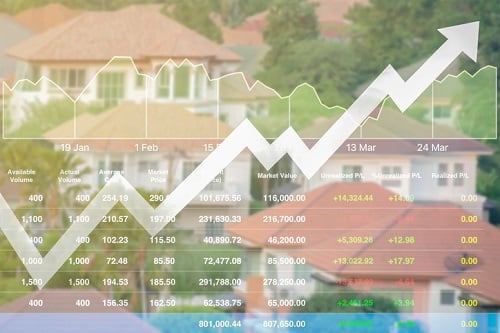US home sales remain strong despite few homes to choose from

The National Association of Realtors’ latest report on existing-home sales revealed another monthly increase in December, with sales in 2020 performing at their highest levels since 2006, despite the pandemic.
Existing-home sales (completed transactions that include single-family homes, townhomes, condominiums and co-ops) inched up 0.7% from November to a seasonally-adjusted annual pace of 6.76 million units in December. Sales in total jumped 22.2% year over year from the 5.53million-unit rate in December 2019.
Sales activity surprisingly remained this strong in December, says NerdWallet Home and Mortgage Expert Holden Lewis, “considering that buyers have few homes to choose from.”
Data from the Mortgage Bankers Association revealed that housing inventory fell 16% month over month to 1.07 million units in December, representing a 1.9-month supply.
“It’s hard to emphasize how bonkers a 1.9-month supply of homes for sale is. That’s a record low, and there’s no doubt that even more people would be buying homes if more owners listed their properties for sale,” Lewis said. “With demand exceeding supply, home prices were 12.9% higher in December compared to a year earlier. When the pandemic subsides, the rapid price appreciation should induce more owners to sell.”
The median existing-home price for all housing types in December was $309,800, 12.9% higher than it was a year ago. The median existing single-family home price was $314,300, while the median existing condo price was $272,200.
Properties typically stayed on the market for 21 days, down from 41 days a year ago. NAR said that 70% of the homes sold in December were on the market for less than a month.
More affordability issues will arise if inventory stays this tight and home-price appreciation continues to accelerate, according to Joel Kan, associate vice president of economic and industry forecasting at MBA.
“This, in turn, would be especially challenging for first-time homebuyers, who make up a third of all home sales,” he said.
First-time buyers accounted for 31% of home sales last month, unchanged from the same time in 2019 but down slightly from 32% in November. Meanwhile, individual investors or second-home buyers (who accounted for many cash sales) purchased 14% of homes in December. All-cash sales made up 19% of transactions while distressed sales (foreclosures and short sales) represented less than 1% of sales.
Regional stats
All four major regions posted double-digit annual gains. The majority of existing-home sales activity happened in the Northeast, where sales climbed by 27.4% year over year to a rate of 930,000 units. Sales down South also increased, up 20.7% annually to rate of 2,860,000 in December.
In the Midwest, existing-home sales spiked 27.4% from a year ago to an annual rate of 930,000. The West recorded a 17.9% year-over-year gain, up to a 1,380,000 pace.
2021 forecast
NAR Chief Economist Lawrence Yun expects the flurry of activity in the housing market and the overall economy to continue this year.
Read more: Strong fundamentals set bullish tone for US housing market in 2021
“Although mortgage rates are projected to increase, they will continue to hover near record lows at around 3%,” he said. “Moreover, expect economic conditions to improve with additional stimulus forthcoming and vaccine distribution already underway.”
According to Freddie Mac, the average commitment rate for a 30-year, conventional, fixed-rate mortgage fell from 2.77% in November to 2.68% in December. The average commitment rate across all of 2020 was 3.11%.
“To their credit, homebuilders and construction companies have increased efforts to build, with housing starts hitting an annual rate of near 1.7 million in December, with more focus on single-family homes,” Yun said. “However, it will take vigorous new home construction in 2021 and 2022 to adequately furnish the market to properly meet the demand.”



